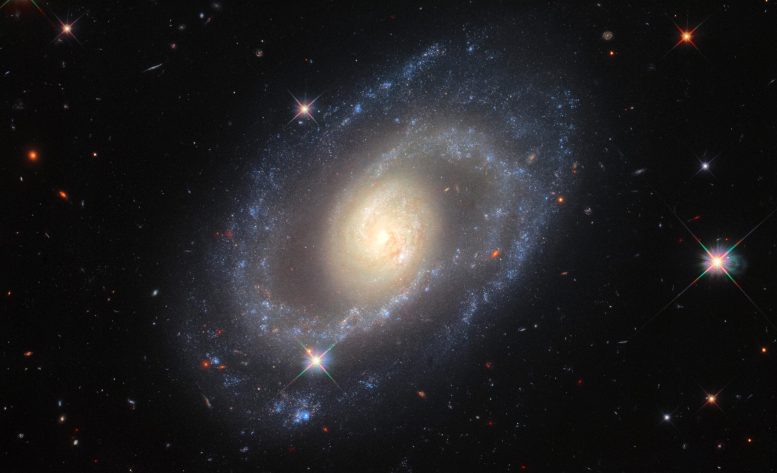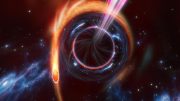
Hubble Space Telescope image of the spiral galaxy Mrk 1337. Credit: ESA/Hubble & NASA, A. Riess et al.
This image from the NASA/ESA Hubble Space Telescope features the spiral galaxy Mrk 1337, which is roughly 120 million light-years away from Earth in the constellation Virgo. Hubble’s Wide Field Camera 3 snapped Mrk 1337 at a wide range of ultraviolet, visible and infrared wavelengths, producing this richly detailed image. Mrk 1337 is a weakly barred spiral galaxy, which as the name suggests means that the spiral arms radiate from a central bar of gas and stars. Bars occur in roughly half of spiral galaxies, including our own galaxy the Milky Way.
These observations are part of a campaign to improve our knowledge of how fast the universe is expanding. They were proposed by Adam Riess, who was awarded a Nobel Laureate in physics 2011 for his contributions to the discovery of the accelerating expansion of the Universe, alongside Saul Perlmutter and Brian Schmidt.









a weakly barred spiral galaxy mark 1337
spiral arms radiate diameter 72,000 light years wide thin disc–radius 36,000 ly
thick disc diameter 50,000 light years–radius 18,000 light years
central bulge diameter 11,000 light years–radius 5,500 light years
central bar of gas and stars 2,000 light years—radius 1,000 light years
central outer core of galaxy 100 light years—-radius 50 light years
central inner core of galaxy 20 light years—–radius 10 light years
outer event horizon of black hole 5au—–radius 2.5 au
inner event horizon of black hole 1au—–radius 0.5
and not in the image but if you throw your eye from the centre of the galaxy to the top right hand corner of the picture there carved by the instrument of gamma ray light lies
well what do you image it as
a gamma ray burst in oblique section travelling away from you to shine its gamma ray light house beam across diagonal space and time
have u gamma x rayed it yet
The article never explains why this galaxy is a “cosmological curiosity.”
It is a special galaxy to search out something new features of the universe This is spiral galaxy.